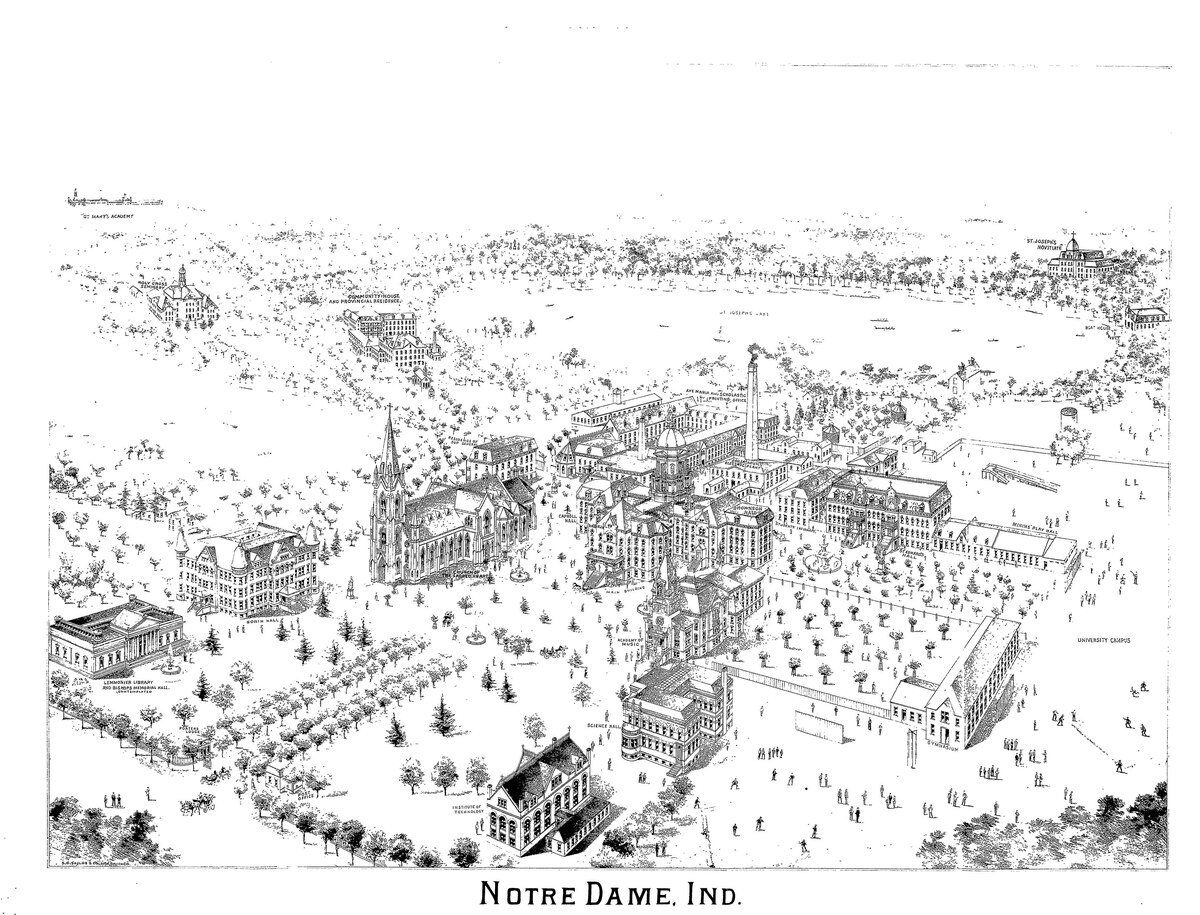
Edward Frederick Sorin, C.S.C. was a French-born priest of the Congregation of Holy Cross and the founder of the University of Notre Dame in Indiana and of St. Edward's University in Austin, Texas.

The Basilica of the Sacred Heart in Notre Dame, Indiana, is a Catholic church on the campus of the University of Notre Dame, also serving as the mother church of the Congregation of Holy Cross (C.S.C.) in the United States. The neo-gothic church has 44 large stained glass windows and murals completed over a 17-year period by the Vatican painter Luigi Gregori. The basilica bell tower is 230 feet (70 m) high, making it the tallest university chapel in America. It is a contributing building in Notre Dame's historic district listed on the National Register of Historic Places. The basilica is a major tourist attraction in Northern Indiana, and is visited annually by more than 100,000 tourists.
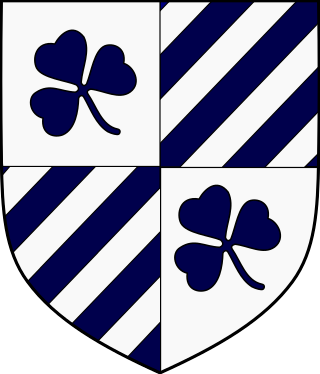
Keenan Hall is one of the 32 Residence Halls at University of Notre Dame. It is located on North Quad in front of North Dining hall, between Zahm Hall and Stanford Hall. Keenan Hall shares the building and The Chapel of The Holy Cross with adjacent dorm Stanford.
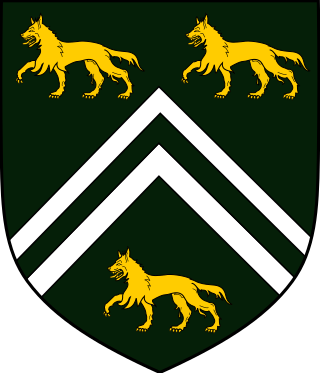
Alumni Hall is one of the 32 Residence Halls on the campus of the University of Notre Dame and one of the 16 male dorms. It is located on South Quad adjacent to "Main Circle", across from the law school building, and it hosts 234 undergraduates.

Sorin Hall, nicknamed Sorin College, is the oldest of the 32 Residence Halls on the campus of the University of Notre Dame and one of the 17 male dorms. It is named after Fr. Edward Sorin, C.S.C., the founder of Notre Dame. Sorin is located directly north of Walsh Hall and is directly south of the Basilica of the Sacred Heart. Sorin houses 143 undergraduate students. Sorin Hall is, along with other buildings on the Main Quad of Notre Dame, on the National Register of Historic Places. Sorin Hall was the first Notre Dame residential hall established as such, although St. Edward's Hall is housed in an older building.

Walsh Hall is one of the 32 Residence Halls on the campus of the University of Notre Dame. Walsh is located on Main ("God") Quad, directly south of Sorin Hall and is directly north of the Knights of Columbus Building. It was built in 1909 and the architect was William J. Brinkmann. Among other buildings on the Main Quad of Notre Dame, Walsh Hall is on the National Register of Historic Places. The coat of arms is taken from the Walsh family.

Badin Hall is one of the 32 Residence Halls on the campus of the University of Notre Dame and one of the 14 female dorms. The smallest residence hall on campus, it is located on South Quad, between Howard Hall and the Coleman-Morse center. It was built in 1897 and hosted the Manual Labor School until 1917 before being converted into a men's dorm. During World War II, it was part of the United States Naval Reserve Midshipmen's School, and in 1972 it became one of the first two residence halls at Notre Dame to host women.

Old College, built in 1843 by the founder of the University of Notre Dame, Rev. Edward Sorin, C.S.C., and the rest of the Holy Cross brothers, is the oldest standing building on campus. Together with other historic structures of the university, it is on the National Register of Historic Places.
There are currently 33 undergraduate residence halls at the University of Notre Dame, including 32 active residence halls and Zahm Hall, which serves as a transition dorm when residence halls undergo construction. Several of the halls are historic buildings which are listed on the National Register of Historic Places. Each residence hall is single-sex, with 17 all-male residence halls and 15 all-female residence halls. Notre Dame residence halls feature a mixed residential college and house system, where residence halls are the center of the student life and some academic teaching; most students stay at the same hall for most of their undergraduate studies. Each hall has its own traditions, events, mascot, sports teams, shield, motto, and dorm pride. The university also hosts Old College, an undergraduate residence for students preparing for the priesthood.
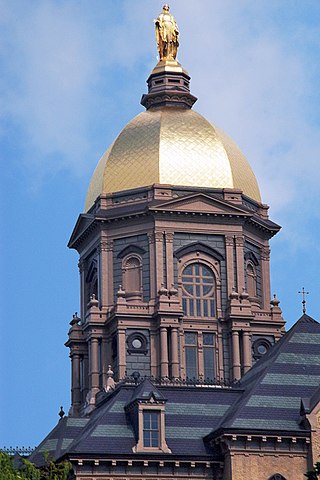
University of Notre Dame's Main Administration Building houses various administrative offices, including the office of the President. Atop of the building stands the Golden Dome, the most recognizable landmark of the university. Three buildings were built at the site; the first was built in 1843 and replaced with a larger one in 1865, which burned down in 1879, after which the third and current building was erected. The building hosts the administrative offices of the university, as well as classrooms, art collections, and exhibition spaces. The building is listed on the National Register of Historic Places.

The University of Notre Dame was founded on November 26, 1842, by Father Edward Sorin, CSC, who was also its first president, as an all-male institution on land donated by the Bishop of Vincennes. Today, many Holy Cross priests continue to work for the university, including as its president. Notre Dame rose to national prominence in the early 1900s for its Fighting Irish football team, especially under the guidance of the legendary coach Knute Rockne. Major improvements to the university occurred during the administration of Rev. Theodore Hesburgh between 1952 and 1987 as Hesburgh's administration greatly increased the university's resources, academic programs, and reputation and first enrolled women undergraduates in 1972.
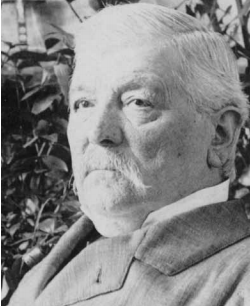
Luigi Gregori (1819–1896) was an Italian artist who worked at the Vatican and served as artist in residence and professor at the University of Notre Dame.

Zahm Hall, also known as Zahm House, is a University of Notre Dame residence hall. The building was constructed in 1937 and is located directly east of St. Edward's Hall and is directly west of North Quad. Starting with the 2021-2022 school year, Zahm Hall hosts communities of residents whose halls are being renovated, starting with Sorin Hall.
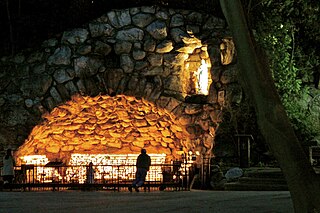
The Grotto of Our Lady of Lourdes is located at the University of Notre Dame in Notre Dame, Indiana, United States, and is a reproduction of the Grotto of Our Lady of Lourdes in Lourdes, France. The current Grotto was built in 1896, replacing a wooden grotto built on August 22, 1878. An artificial rock cave, the Grotto is used by its visitors as a sacred space for prayer, meditation, and outdoor Mass.

The Log Chapel was originally built in 1831 by Rev. Fr. Stephen Badin as a mission to the Potawatomi Indians in what would become northern Indiana. It was one of the first Catholic places of worship in Northern Indiana. It was given in 1842 to Fr. Edward Sorin, and it became the original nucleus of the University of Notre Dame.
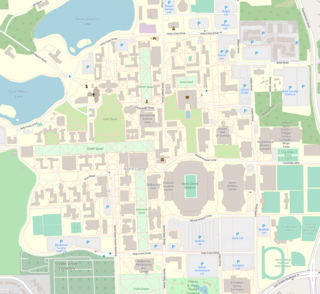
The campus of the University of Notre Dame is located in Notre Dame, Indiana, and spans 1,250 acres comprising around 170 buildings. The campus is consistently ranked and admired as one of the most beautiful university campuses in the United States and around the world, particularly noted for the Golden Dome, the Basilica and its stained glass windows, the quads and the greenery, the Grotto, Touchdown Jesus, its collegiate gothic architecture, and its statues and museums. Notre Dame is a major tourist attraction in northern Indiana; in the 2015–2016 academic year, more than 1.8 million visitors, almost half of whom were from outside of St. Joseph County, visited the campus.

The Rev. Andrew Morrissey, C.S.C. was an Irish-American priest and President of the University of Notre Dame from 1893 to 1905, after having served previously as director of studies. He was born in 1860 in Ireland, and left for America at the age of twelve. He studied in the United States and was professed with the Congregation of Holy Cross in 1880. He taught at Sacred Heart College, Watertown, Wisconsin, and was ordained priest in 1884. Morrissey Hall at the University of Notre Dame was dedicated in his honor.

The Rev. Thomas E. Walsh, C.S.C. was an Irish-Canadian Catholic priest, and seventh President of the University of Notre Dame from 1881 to 1893. He was born one of nine in Lacolle, Quebec, son of Thomas Walsh and Winifred McDermott. He was educated at the College de Saint-Laurent, where he caught the attention of Rev. Edward Sorin, who saw his potential. He finished his studies there in 1872 and entered the Novitiate. Sorin sent him to study at College de Ste. Croix in Neuilly, close to Paris, where he spent three years. He was recalled to Notre Dame in 1876 in order to improve enrollment. He was ordained a priest on August 29, 1877, by Bishop Joseph Dwenger of Fort Wayne and then assumed the role of dean of students. After the great fire of 1879, Walsh was in charge of rescheduling classes and professors in the newly reopened college, and his administrative ability led Sorin and William Corby to pick him as next president in 1881. He died of kidney disease at the age of 40.

Baumer Hall is one of the 31 residence halls at the University of Notre Dame. It located on West Quad, south of Keough Hall and west of Ryan Hall, on the McGlinn fields. It is the newest men's residence hall, built in 2019, after a donation from John and Mollie Baumer.

Carroll Hall is one of the 33 Residence Halls on the campus of the University of Notre Dame and one of the 16 male dorms. Carroll is located on the shores of St. Mary's Lake, and is the smallest of the residence halls, housing around 100 undergraduates.



